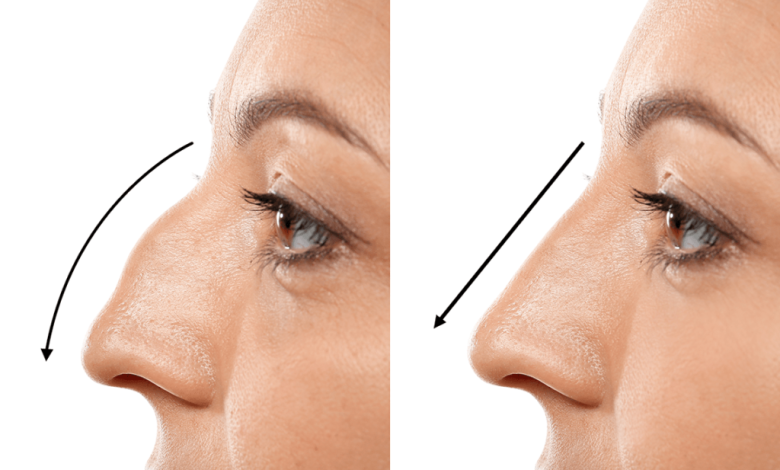
Rhinoplasty treatment is a surgical procedure for correcting defects in the nose. There are many different types of rhinoplasty, and they all have different goals. There is a huge variety of rhinoplasty procedures, both closed and open. Some common closed-type rhinoplasty procedures are nose jobs or simply reshaping the nose using a plastic surgeon’s tool. In contrast, other open-type rhinoplasty surgeries involve cutting open the nostrils and reopening them with surgeons using a scalpel. You can get the best rhinoplasty surgeon in your city. Just, Google, for example, best rhinoplasty London. The main benefit of either type of rhinoplasty is that it can correct defects in the nose to look more natural and realistic.
Closed Rhinoplasty:
This type of rhinoplasty treatment is done using a closure method, a type of stitch put into place to keep the nose open. A closed rhinoplasty uses a closure method to perform the procedure. This method closes the opening at the top of the nose. This allows for better airflow and can help improve your overall air quality.
-
Botox for Rhinoplasty:
This injectable version of Botox is used to relax the muscle that holds the skin together. The goal of Botox for rhinoplasty is to help the patient have a more natural-looking nose after surgery.
Open Rhinoplasty:
This type of rhinoplasty treatment is done using an open method, meaning the nose can be reshaped without any closing methods. A rhinoplasty corrects or improves the shape and structure of the nose through surgery. This surgery usually takes place in the form of a rhinoplasty, which is an operation that uses an open method. This means that the surgeon can continue working on the nose even after it has been cut away from the face. While closed rhinoplasty is still a common type of rhinoplasty, it has some key advantages over open rhinoplasty.
Advantages of Rhinoplasty:
The first advantage of closed rhinoplasty is that it is less complex than open rhinoplasty. This means that patients are able to have more control over their facial appearance and can avoid having to go through a lot of pain and worrying about potential complications.
Differences Between Closed And Open Rhinoplasty:
There are a few major differences between closed and open rhinoplasty. The most significant difference is that open rhinoplasty allows for more exposure to the underlying cartilage, which can lead to better health outcomes. Closed rhinoplasty typically results in less exposure, which can lead to a more severe deformity or even an Addison’s disease diagnosis. Another important difference is that open rhinoplasty does not require any anesthesia. However, both types of rhinoplasty are performed under general anesthesia, which can be very uncomfortable for the patient.
Closed rhinoplasty:
Closed rhinoplasty has more complications and requires more care than open rhinoplasty. It is a surgical procedure that involves cutting open the nose to remove the nasal bone. The surgery is often performed for cosmetic reasons, but it can also be used to fix more serious nose problems.
Types of Closed rhinoplasty:
There are two main types of closed rhinoplasty: open and closed cranioplasty. Open cranioplasty is done in which the inside of the nose is removed completely, while closed cranioplasty typically leaves just a small slice through the top of the nose. Some common problems that can be fixed by Closed rhinoplasty include nasal congestion, blocked noses, and watering eyes. Consult your doctor before beginning this surgery to ensure it’s right for you.
This type of surgery is more complex and requires more care than open rhinoplasty, which is a simpler procedure where the nose is simply cut away. Rhinoplasty, or rhinoplasty, is a surgery that is more complex and requires more care than open rhinoplasty. Open rhinoplasty is a simple procedure that can be done without any surgical complications. Closed rhinoplasty, on the other hand, is a more complex surgery that typically requires extensive medical and surgical planning. Closed rhinoplasty may also require additional treatments, such as antibiotics, to help prevent infection. There are also potential complications associated with closed rhinoplasties, such as infection and air bubbles in the eye.
A closed rhinoplasty involves making a small incision in the nose to perform the surgery. This surgery can be done for cosmetic or medical reasons. There are potential complications associated with closed rhinoplasties, such as infection and air. Closed rhinoplasty can cause more problems than open rhinoplasty, so it is important to wait until after the surgery to find out if it is the right choice for you.
Open Rhinoplasty:
Open rhinoplasty means that the surgeon has access to all sides of the nose so they can create a new nose from the inside out. This approach is more complex but allows for greater flexibility and range of motion when creating a new nose.